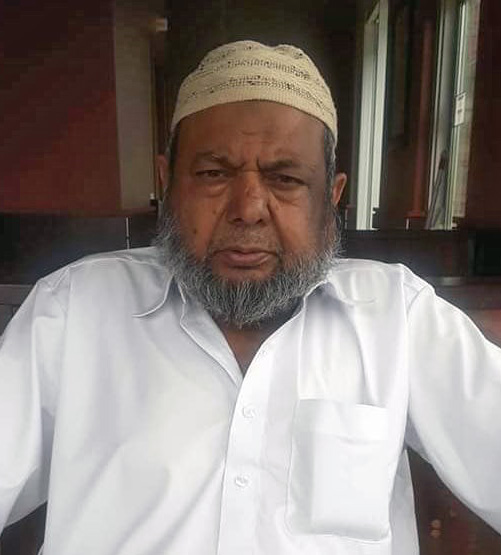ISLAMABAD: Pakistan’s foreign office said on Wednesday it was in touch with the family of a Pakistan origin Canadian man who had been gunned down by police in Mississauga on Saturday during a mental health check.

Ejaz Ahmed Choudry, 62, was shot and killed by police in his apartment in Mississauga, Canada on Saturday June 20, 2020. His family. ( Supplied by Choudry family)
Ejaz Choudry, 62, was killed over the weekend when police responded to a call to “check on the well-being of a man,” the BBC reported. The Globe and Mail, Canada’s most widely read newspaper, said the father of four had schizophrenia and his family had called a non-emergency line hoping he would be taken to hospital and helped through a mental-health crisis.
“We are aware of the unfortunate incident in which a Canadian of Pakistan origin, Mr. Ejaz Choudhry, was killed on 20 June 2020 in Malton, Mississauga,” foreign office spokeswoman Aisha Farooqui said in response to questions sent by Arab News via text message. “Our Mission in Toronto is in touch with the family of the victim as well as the host government in order to get more details.”
She said Pakistan had offered its condolences to the bereaved family and “our missions in Canada stand ready for any assistance needed by the family.”
Media reported that police burst through the door of Choudhry’s second-floor balcony and into the apartment where he was alone, armed with a knife and suffering a mental breakdown.
“He wasn’t a danger to anyone else. He was by himself in his home where he felt safe,” Hassan Choudhary, one of Choudry’s nephews, told the Globe and Mail. “He can’t think straight, he’s schizophrenic, and [police] are going and killing him because he’s going to kill himself? Where’s the logic in that?”
Choudry’s killing comes amid a barrage of calls for police reform following the deaths of several Canadians in incidents involving the police during what were supposed to be calls to check on their mental wellbeing.
Rodney Levi, 48, and Chantel Moore, 26, both Indigenous people, were shot by police in New Brunswick in separate incidents this month. Regis Korchinski-Paquet, a 29-year-old Black woman, fell from a 24th-floor balcony in Toronto while in the company of police who had been called to help her with a mental health crisis at the end of May.
Video taken by a bystander shows tactical officers responding to a call at an apartment building on Morning Star Drive in Mississauga, Canada on Saturday June 20, 2020. Later a man was killed. (Courtesy: Ibrahim Hindy/Twitter)
















